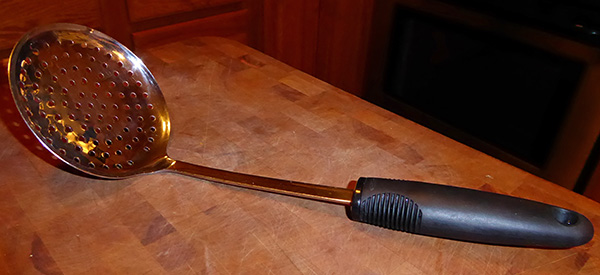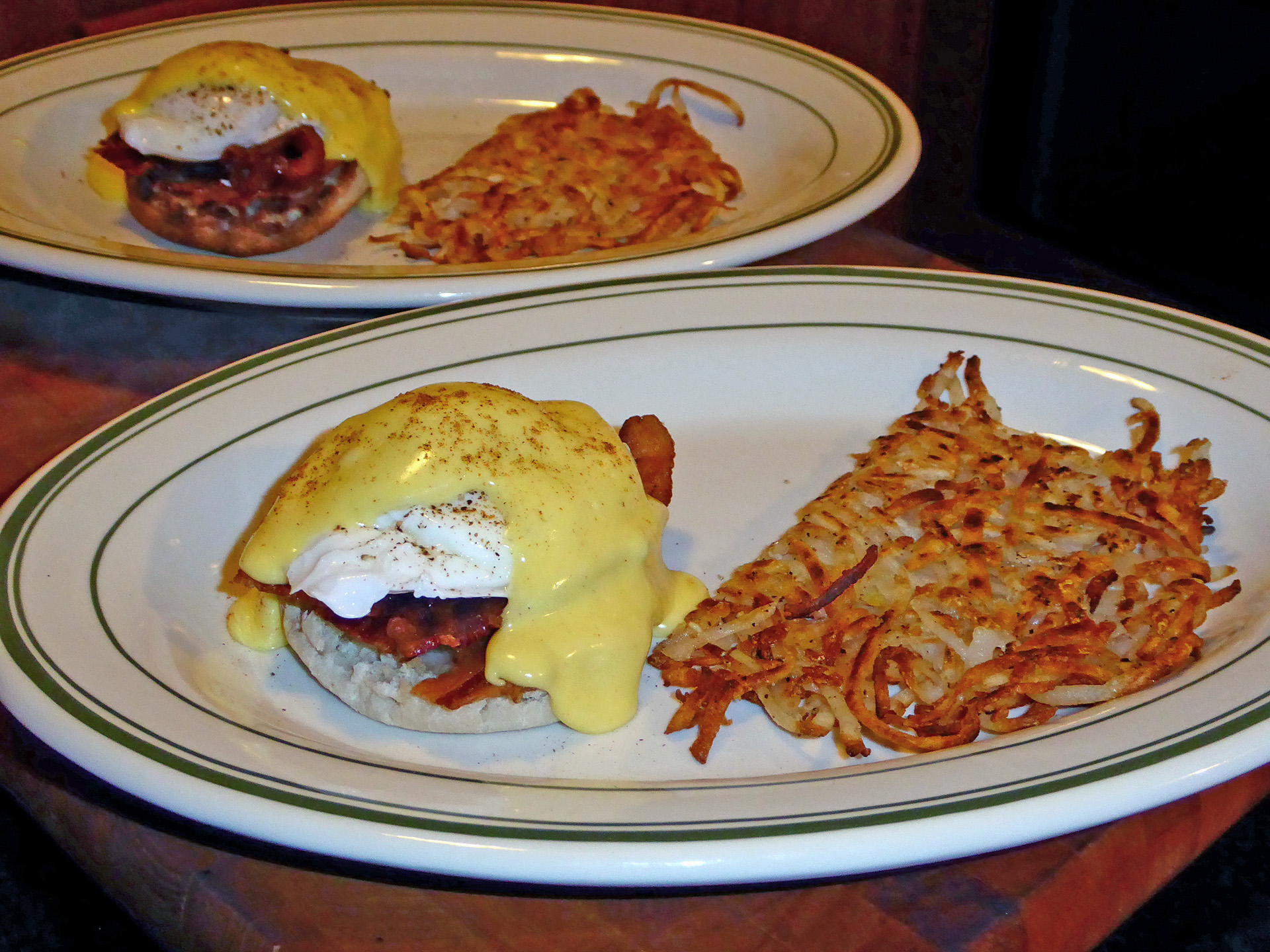An email recipe link from ThermoWorks this morning inspired a breakfast-for-dinner tonight of Eggs Benedict with slow-cooked bacon and hash browns. Their article includes a fast and easy method for Hollandaise sauce using an immersion blender, room temperature yolk, and heated butter. This cut-in-half version is plenty for four tablespoon-and-a-half servings on poached eggs:
In a container a little wider than the head of your immersion blender – a two-cup Pyrex measure in my case – place the following:
- 1 egg yolk
- 1 teaspoon water
- 1 teaspoon lemon juice
- Pinch of salt
- Pinch of cayenne pepper
In a small pan, preferably with a pouring lip, melt 1 stick/4 oz./115 g butter and get it up to about 200°F/95°C. While running the immersion blender directly on the bottom of the yolk container, pour the hot melted butter into the yolk mixture in a thin stream and it will pretty quickly emulsify into Hollandaise. You may need to move the head of the blender up and down a bit to get it all to mix well, and you can finish with a small whisk if needed.
A side note on the claim in the linked article that “J. Kenji López-Alt has come up with an ingenious solution to all of these problems [of making Hollandaise]”: Utter piffle. While I don’t know if Julia Child invented the method, I do know it was in her Mastering the Art of French Cooking, Volume 1 under the title “Hollandaise Sauce Made in the Electric Blender”. The recipe employed a regular blender because immersion blenders weren’t available to the home cook in 1961.
Edited to add: I did not know the ThermoWorks blog was, like The Finley Quality Network, on WordPress, but so it seems to be. That means they got a pingback from this post of mine, and they’ve graciously adjusted their article and added a comment at the end after reading my post. I tip my hat westward.

Above that recipe, she instructs how to revive leftover Hollandaise. Many recipes you’ll find say, “Nope, can’t do that – use it or lose it.” More nonsense.
Also, I would advise against using the type of strainer they show in the article to drain the watery part of egg whites before poaching. I once tried that type with eggs that were only a couple days old – which therefore had pretty firm whites – and most of the whites went straight through. Instead, I use this perforated skimmer that happens to balance against the side of the sink perfectly. After draining, I place each egg into its own glass prep cup so they’re all ready to go in the water at the same time.



